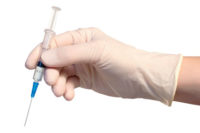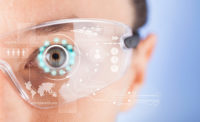
Serious and disabling foot injuries such as crushing, puncture wounds and sprains get considerable attention in the workplace, but a more subtle kind of foot injury — one which develops over time — can also be painful and disabling.
Discomfort due to foot problems not only lowers productivity; it also leaves workers distracted and less likely to observe safe working procedures, heightening the possibility of accidents.
The human foot is a marvel of mobility, with 26 bones, 33 joints, 107 ligaments, and 19 muscles and tendons that work together to propel the body forward while supporting its weight.
What feet don’t do well is to stand still for long periods of time while their owners maintain an upright stance. Still, many jobs require workers to do just that, leading to health consequences that can go far beyond temporary foot fatigue. Inflammation caused by continuous standing for hours at a time can eventually cause rheumatism and arthritis, as well as a painful misalignment of the joints of the feet. These conditions can be aggravated by certain types of flooring and footwear.
It’s possible to design both jobs and workplaces for optimal foot safety and comfort, according to the Canadian Centre for Occupational Safety and Health (CCOHS).
“The most important goal of job design is to avoid fixed positions, especially fixed standing positions,” according to CCOHS, which notes that good job design includes varied tasks that require changes in body position and use different muscles.
Foot-friendly job design
- Job rotation: Moving workers from one job to another shortens the time each person spends in a stationery standing position and distributes standing for specific jobs among a group of workers. For rotation to achieve the desired effect, different jobs in the rotation must require different movements or positions, like walking or sitting.
- Job enlargement: Include more and varied tasks in a worker’s duties. This increases the range of body positions and motions, lessening the risk of the individual developing foot problems.
- Team work: Give your team more autonomy in planning and allocating work, with each team member performing various operations to help complete the product. “Team work allows workers to alternate between tasks, which, in turn, reduces the risk of overloading the feet,” says CCOHS.
- Rest breaks: If redesigning a job is impractical, frequent short breaks (rather than fewer longer breaks) help to alleviate foot problems.
Foot-friendly workplace design:
For a job redesign to effectively reduce foot problems, it must be combined with a redesign of the workplace.Since standing on a hard, unyielding surface — like concrete — causes or contributes to many foot ailments, start a workplace redesign with floor surfaces. Cork, carpeting, rubber and even some types of wood provide a degree of flexibility to improve a worker’s foot comfort level.
Anti-fatigue matting provides cushioning to reduce foot fatigue. This matting must be installed properly, however, or it can actually hinder workplace health and safety by causing tripping and slipping accidents.
If it is not practical to make changes to flooring surfaces, footwear with thick, insulating soles and shock-absorbing insoles can alleviate discomfort.
What to look for in footwear
Some jobs, work environments or job-related hazards require specific types of footwear. Still, the following qualities can be found in all good footwear, according to CCOHS:- The inner side of the shoe must be straight from the heel to the end of the big toe.
- The shoe must grip the heel firmly.
- The forepart must allow freedom of movement for the toes.
- The shoe must have a fastening across the instep to prevent the foot from slipping when walking.
- The shoe must have a low, wide-based heel (flat shoes are recommended).
They should:
- Have both feet measured and buy shoes to fit the bigger foot (feet normally differ in size)
- Buy shoes late in the afternoon, when feet are swollen to their largest size.
- Buy shock-absorbing insoles if a job requires walking or standing on hard surfaces.
- Heel elevation;
- Toe spring (when the toebox is elevated above the supporting surface);
- Toe taper
What protective footwear can & cannot do
Feet face a daunting array of dangers in many workplaces. They risk being trapped between objects; crushed by moving vehicles; punctured by nails; damaged by chain saws, rotary mowers and unguarded machinery; burned by chemical splashes or injured by electrical shock.In addition, wet or freezing weather conditions can raise the risk of frostbite and trench foot among those who work out of doors.
While protective footwear cannot prevent all foot injuries, it is an important — and OSHA-required — component of a safe workplace if “there is a danger of foot injuries due to falling or rolling objects, or objects piercing the sole, and where there is a possibility of the employee’s feet being exposed to an electrical hazard.”1
Wearing such footwear, however, does not guarantee total protection. The role of all PPE — including protective footwear –– is to minimize exposure to specific occupational hazards, not to eliminate them. As with other types of PPE, helping employees choose the right type of protective footwear starts with a risk assessment that identifies hazards in the workplace.
Protective footwear primer 2
- A steel toe cap should cover the entire length of the toes, from their tips to beyond the natural bend of the foot. A soft pad covering the edge of the toecap increases comfort. If the toecap cuts into the foot, either the size or style of the footwear is incorrect.
- Soles come in a variety of thicknesses and materials. They need to be chosen according to the hazards and type(s) of flooring in the workplace.
- The uppers of protective footwear come in a range of materials. Selection should take into account the hazards as well as the individual characteristics of the worker’s foot.
- A steel midsole which protects the foot against penetration by sharp objects should be flexible enough to allow the foot to bend.
- No one type of non-slip footwear can prevent the wearer from slipping on every surface type.
References
1 OSHA regulation 29 CFR 1910.136(a).2Foot Comfort and Safety at Work.Canadian Centre for Occupational Safety and Health (CCOHS). www. ccohs.ca/oshanswers/prevention/ppe/foot_com.html.



